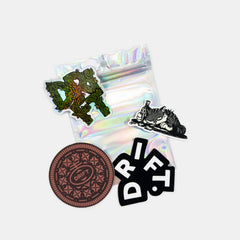As they say, you’ve either heard it or you haven’t.
Marquee Moon is the debut LP from NYC institutions Television, an absolutely perfect album of winding riffs that’s a solid lock in for the Drift all time top ten… nah, come on… top five, at least!
Formed in New York City in 1973, Television exploded out of the CBGB punk scene, with an evocative combination of lyrical gnarl and intricate guitar lines. Although mainstays of the booming scene (and a little reminder that Marquee Moon was released in February, a full six months at least before The Sex Pistols 'invented punk' in the October), they stood apart from their contemporaries with a cleaner and more precise sound. Sonically sharing more in common with fellow New Yorkers The Velvet Underground than they did with fellow New Yorkers, Ramones (who themselves had released two albums before The Sex Pistols invented punk...), Marquee Moon is a touchstone in that it combined punk energy with instrumental sophistication.
Recorded in late 1976 at NYC’s A&R Studios with engineer Andy Johns (known for work with Led Zeppelin and The Rolling Stones), the sessions were focused on finding separation in the instrumentation. Produced by the band’s Tom Verlaine, the arrangements had been honed through lengthy live performances at CBGB, ensuring that the studio experience was about avoiding distortion-heavy punk aesthetics and capturing Television’s dense and complicated but beautifully free flowing vibe. One of the most distinguishable parts of the Television sound are the interlocking guitars of Tom Verlaine and Richard Lloyd, recorded specifically to the left and right channels and almost entirely unadorned by effects or compression, and for the vast majority recorded live without overdubs. On release, Rolling Stone raved that the interplay of Verlaine and Lloyd was “the most original guitar partnership in years”, a line that has only become more true over the last five decades. Billy Ficca’s drumming and Fred Smith’s bass lines are also hugely imaginative and can’t be ignored, spacious yet driving in the mix and enabling the longer running songs (the majority of the albums’ eight tracks clock in at over five minutes) to ebb and flow through both sparseness and grandeur.
Side A cuts See No Evil, Venus and Friction set out the stall with crisp and angular riffs. Everything shimmers, with Verlaine’s lyrics - poetic lines of urban imagery, social disaffection and surreal romanticism - rarely falling in sync with the thrilling drive of the rhythm section. The album’s title track and centrepiece is worthy of a Sunday Classic all of its own, ten magnificent minutes of evolving guitar lines, dynamic shifts and hypnotic grooves. God only knows how many times we’ve listened to that over the years, never skipping a second of its utter magnificence. A remarkable song and a remarkable recording of it.
The second side has a more pensive energy, with the trippy timing of opener Elevation and sublime softer textures of Guiding Light sitting together as beautifully-strange bedfellows. Prove It is full of bounce - and some of the album’s most spidery riffs - before it all comes to an end with the tense and slow-building Torn Curtain, a minor-key stunner that fades out with one of rock ’n’ roll’s greatest unresolved moods… Fortunately you just flip the disc and you’re right back in!
Marquee Moon is an uncompromising masterpiece, a blueprint for post-punk and indie guitar music and an album that was wildly original. One of the most important albums of all time, one of the most influential albums of all time and one of the most gratifying albums of all time. If for some reason you haven’t heard it yet, make time to listen to it, and trust… you won’t ever look back!







